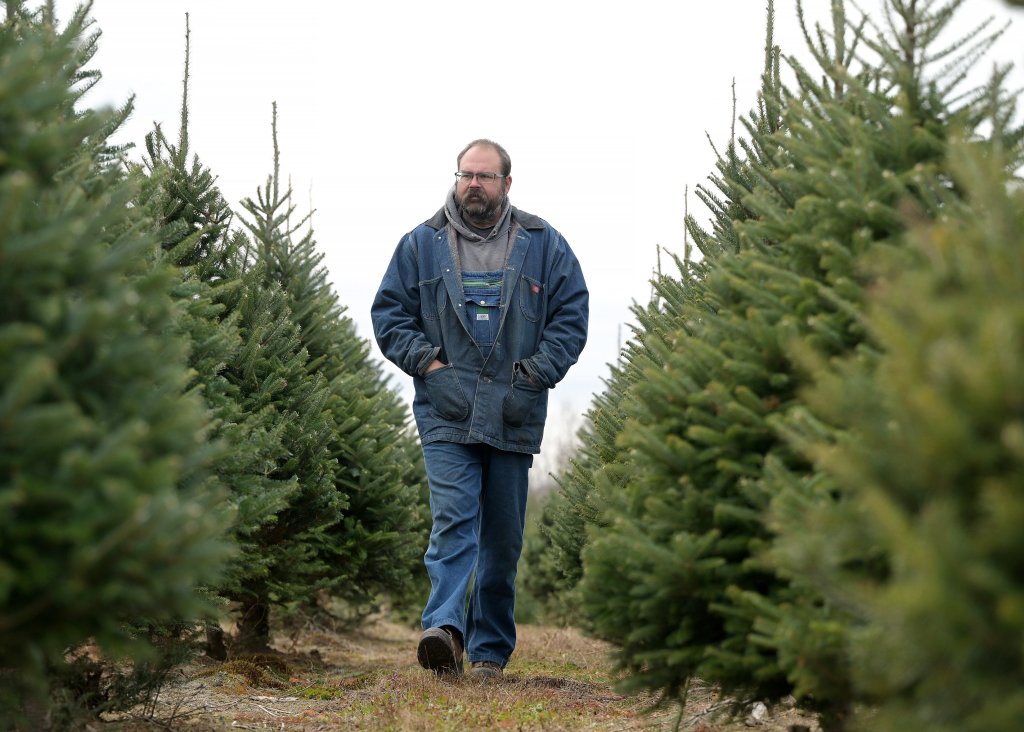
Matthew Quinn doesn’t remember a time when it was quite this dry at his Christmas tree farm in Cornville.
Over the past two months, he’s spent time toting water out to the 3,000 trees he planted last spring at Quinn’s Tree Farm to make sure they don’t get too dry. But for Quinn and others in the industry, the ongoing drought has not caused large-scale damage to the hundreds of thousands of conifers growing on farms across Maine.
And when it comes to the trees that people will buy this holiday season, the news is good: They’re healthy and ready to go.
“It’s not an ideal situation, but we’re holding our own,” said Quinn, president of the Maine Christmas Tree Association.
This year, Maine saw its sixth-driest summer on record, with nearly 3 fewer inches of rain than the historical average of 11 inches, according to the National Weather Service. As of Oct. 9, 30% of Maine was in extreme drought, and the rest of the state was in moderate to severe drought.
The drought has caused reductions in hay crops, shortened the season for many row crops, and could hurt next year’s berry and tree fruit.
For many Christmas tree farmers, the dry conditions created a need for more irrigation or hand watering of the trees planted over the past two springs. Those young trees are especially susceptible to drought because their root systems don’t go deep into the ground, said Ryan Liberty of Crooked Brook Farm in Wells.
“It’s one thing to have the lack of rain, but when you couple the temperatures we had this summer with intense sunshine on top of the lack of rain, it’s a recipe for disaster in the Christmas tree industry,” Liberty said.
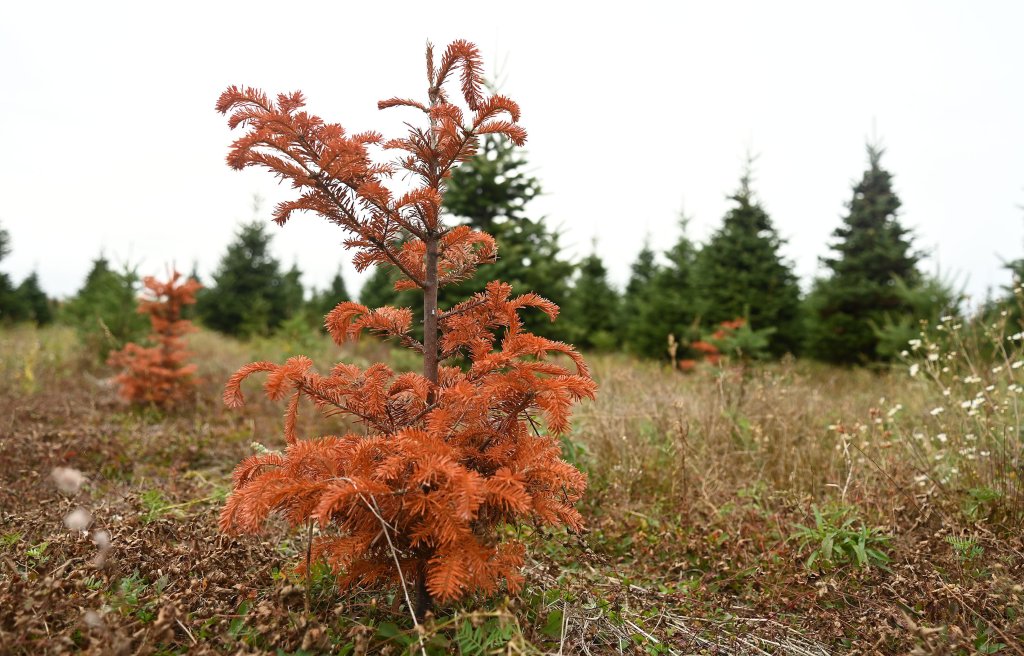
The state’s Christmas tree industry, which includes producing and selling fresh trees and wreaths, creates an estimated $18 million in direct economic impact each year and supports nearly 800 jobs across the state, according to the Maine Department of Agriculture, Conservation and Forestry.
Nationwide, wholesale growers expect a strong supply of real Christmas trees that will be able to keep up with demand, according to the Real Christmas Tree Board. A survey by the industry organization shows that 32% of growers expect to sell more trees this holiday season than they did last year.
While some growers are seeing increases in their costs — especially for specialty equipment manufactured outside of the U.S. — sellers are largely absorbing those price surges rather than passing them along to retailers, according to the board. Canadian-grown trees are considered an agricultural commodity and are exempt from tariffs.
“Growers are prepared, supply is strong, and most are holding wholesale prices steady this year,” Marsha Gray, executive director of the Real Christmas Tree Board, said in a statement. “This reflects the consistency of the real Christmas tree industry and the commitment of growers to ensuring that there’s a real Christmas tree for everyone who wants one.”
AVOIDING BIG LOSSES
At Merry Christmas Trees in Windham, Doug Fortier has been irrigating the small trees he planted over the past two springs. He had to do the same a few years ago because of another drought.
“I’d probably have a fairly large loss if I didn’t,” said Fortier, who took over the tree farm from his parents in 2005. He now has between 8,000 and 10,000 trees in the ground.
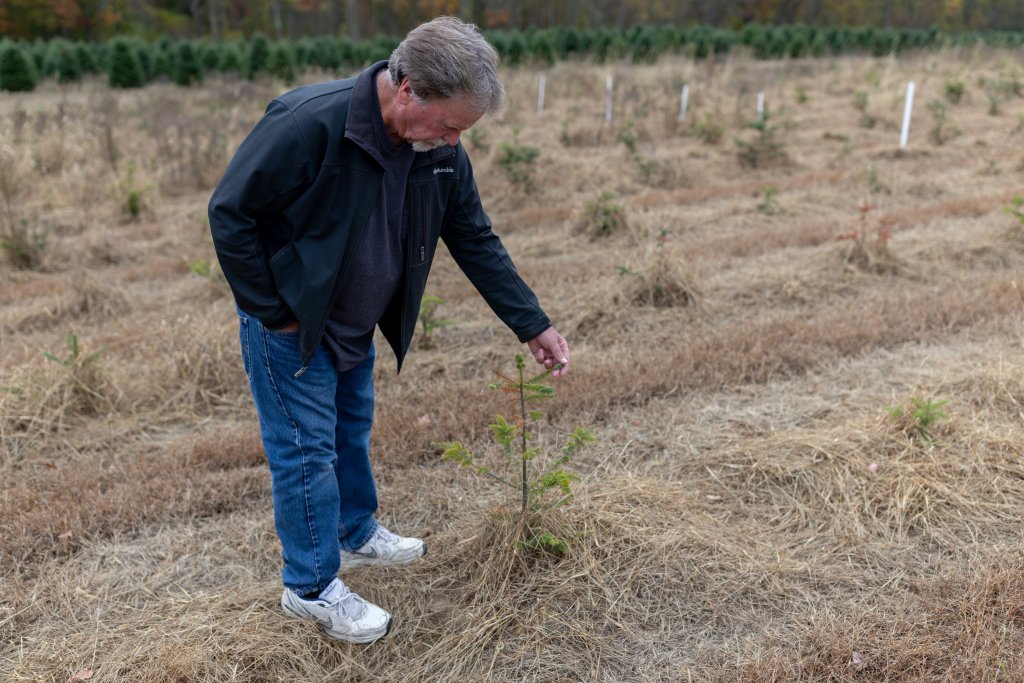
Fortier said he’s lucky he can irrigate so he doesn’t see large losses during these sorts of dry stretches.
“I’d be more worried if I didn’t have the means to irrigate,” he said.
Down in Wells, Liberty has also been spending more time watering young trees than he typically does. Last spring, he planted about 300 seedlings on his farm, where he started growing Christmas trees 10 years ago.
During that decade, he’s been through about a half-dozen droughts, some more extreme than others, Liberty said.
“I can’t rely on the natural rainfall,” he said.
Liberty said he has noticed one curious drought impact on his larger trees, many of which were planted close to a decade ago: While those trees are holding up well, they are already shedding winter needles — something that usually happens in November and December.
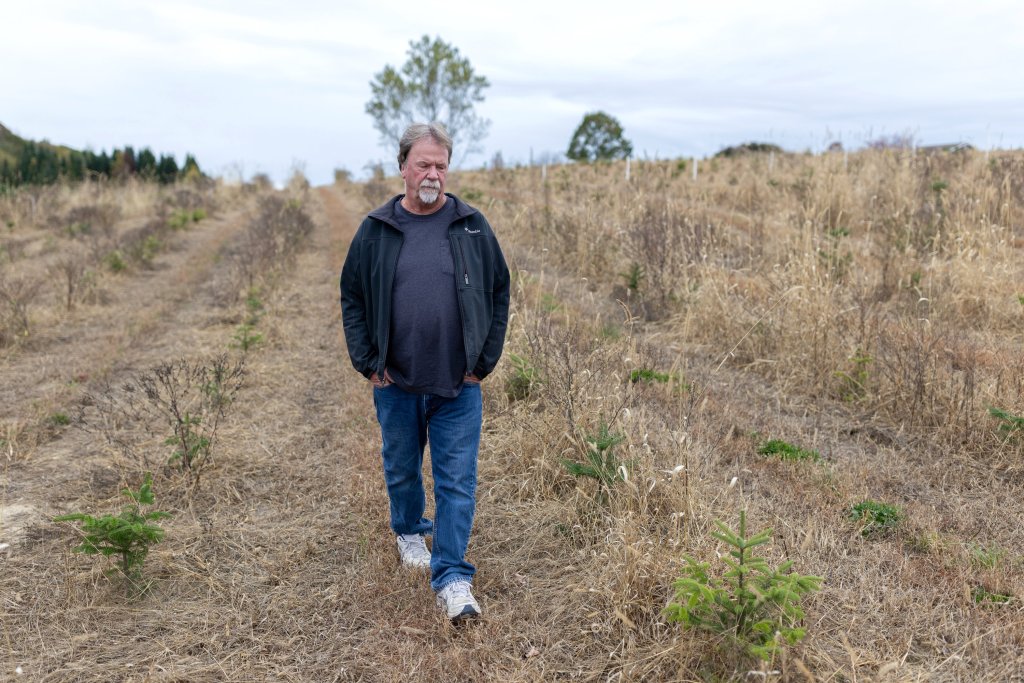
‘WE’RE GOING TO ENDURE’
At his farm in Cornville, Quinn has put in extra work to keep his newest trees going but has still seen his mortality rate jump from 10% to 20%. He’s had better luck than one neighbor who lost close to 3,000 new trees this year.
Quinn didn’t spend much time thinking about irrigation systems before 2020. That year, he planted trees when it was “bone-dry” and looked into various irrigation setups. That same field was soaking wet for the next two years, and he found himself researching drain tiles.
“Every year is something different,” Quinn said. “The climate is changing, and we’re experiencing so many swings in the weather that it’s very difficult to keep up.”
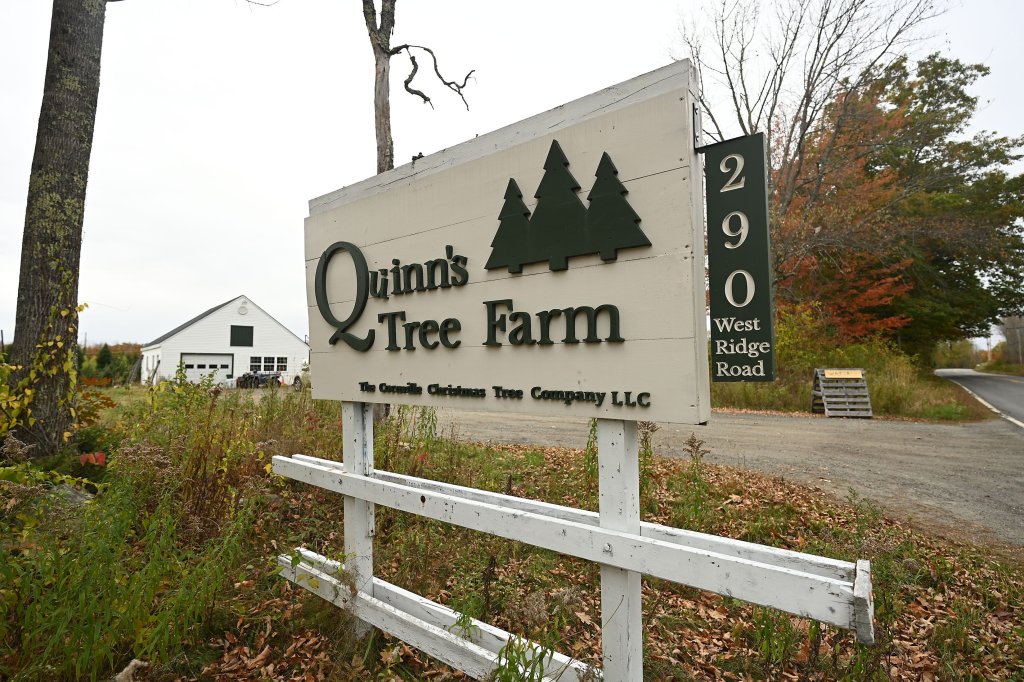
Wholesale farms that grow hundreds of thousands of trees typically have irrigation systems already in place, Quinn said. Those growers will start to cut and ship trees to sellers across the U.S. this month and into early November, in time for sales to start after Thanksgiving.
“We’re going to endure. We’re going to get it done,” Quinn said. “Christmas trees keep growing. Christmas will never be canceled.”

We invite you to add your comments. We encourage a thoughtful exchange of ideas and information on this website. By joining the conversation, you are agreeing to our commenting policy and terms of use. More information is found on our FAQs. You can modify your screen name here.
Comments are managed by our staff during regular business hours Monday through Friday as well as limited hours on Saturday and Sunday. Comments held for moderation outside of those hours may take longer to approve.
Join the Conversation
Please sign into your CentralMaine.com account to participate in conversations below. If you do not have an account, you can register or subscribe. Questions? Please see our FAQs.